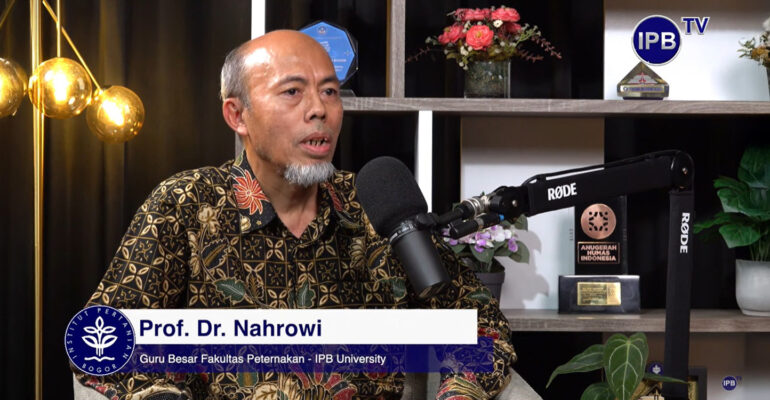Supporting Meat Self-Sufficiency, IPB University Professor Develops Cattle-Palm Integration System

Professor of the Faculty of Animal Science of IPB University, Prof Nahrowi, emphasized that the cattle and oil palm integration system (SISKA) has great potential in improving land use efficiency and supporting national meat self-sufficiency.
“The cattle and oil palm integration system is an integrated agricultural model that combines oil palm cultivation and livestock in one land,” Prof Nahrowi explained in a podcast on IPB TV’s YouTube channel.
Through this integration system, land use efficiency can increase. If previously the land was only used for oil palm crops, now by applying SISKA, the same land can also be used for cattle farming.
According to Prof Nahrowi, this system brings benefits to two main parties, namely farmers and planters. “Farmers no longer need to buy feed, because cattle can graze among oil palm stands.”
“Meanwhile, oil palm planters can save on the cost of purchasing herbicides, because the weeds under the oil palm trees will be consumed by the cows,” he added.
In addition, this integration also helps reduce the use of chemical fertilizers. “The remaining feed consumed by the cows will produce manure that can become natural fertilizer for oil palm plants,” he said.
As the Chairman of IPB University’s Center for Tropical Animal Studies (Centras), Prof Nahrowi also revealed how this system can help achieve national cattle self-sufficiency.
Based on data, the area of oil palm plantations in Indonesia reaches 16,8 million hectares. “If half of the land area is used for the SISKA system, it can accommodate around 8,4 million cattle. Thus, this program can contribute significantly to national meat production,” he said.
Currently, this integration system has been implemented by one of IPB University’s alumni, Wahyu Darsono, in South Kalimantan through PT Simbiosis Karya Agroindustri (SISKA Ranch).
“The model developed by Mr Wahyu has been running for more than six years and has proven suitable for development in oil palm plantations,” said Prof Nahrowi.
So far, there are 58 SISKA clusters spread across South Kalimantan, West Kalimantan, East Kalimantan, and Riau. To support further development, IPB University plans to build a miniature SISKA system at IPB Jonggol Innovation Valley as a learning and research center.
“Support from various parties is needed so that this system can be widely applied. SISKA has great potential to be a solution in creating sustainable agriculture and livestock businesses,” said Prof Nahrowi. (dr) (IAAS/LAN)



